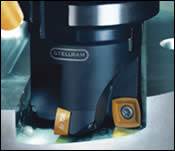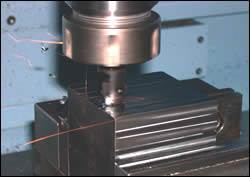Holders/Cutters/Inserts Combination Maximizes Productivity
A switch in cutting tools triples the output at a die stamping facility.
Grand Rapids, MI-based Pridgeon& Clay, Inc. (P&C)—an independent, value-added manufacturer and supplier of stamped and fine blanked components for the automotive industry—has enjoyed great success in the 58 years it has been operating, with a main facility in Grand Rapids and secondary facilities in Franklin, IN and Apostag, Hungary. The company’s R&D center—also located in Grand Rapids—has been in operation for 11 years and employs more than 30 men and women.
This 37,000-square foot facility houses five CNC milling machines, two wire EDMs and a CNC lathe to turn out die details or components for both mass production tooling and prototype tooling.
“One of the biggest challenges we face is delivery,” notes P&C’s R&D CNC Supervisor Rick Downs. “In one week, we typically process more than 100 different components. It may not sound like much but, when a component leaves our docks, it can go directly into a die and run. This keeps press downtime to a minimum.”
The cutting tools P&C were using were not helping its delivery times. “We are expected to hold tolerances of +/-.0005" on most details and the surface finish varies from part to part,” Downs explains.
The Cutting Edge
It became more challenging for P&C to meet its customer’s demands while still maintaining lean operations with its cutting tool selection. “It’s extremely easy to add labor, but not real cost effective,” Downs notes. “There are no deep secrets here—it comes down to our technology, good shop practices, housekeeping, and making sure the operators have what they need when they need it. It’s all pretty basic. The cutters we were using were slow and ineffective. The biggest problem we had was keeping a consistent finish without slowing machine rates. The price was good, but the output was weak.” Downs decided the time was right to add new cutters and holders to its operations. By changing to the same supplier for both the cutters and holders, it would ensure optimum performance and hold the cutting edge at the correct angle.
After researching the various tools on the market, Downs decided on F2330 high- performance cutters in combination with the P26337 R14-inserts in the Tiger-tec grade WKP35, manufactured by WALTER USA, Inc. (Waukesha, IL). “Before our decision, we also took a look around at what shops we would like to emulate,” Downs states. “After benchmarking one of the better shops in West Michigan and after quite a bit of research we found only a few suppliers who were able to support our operations in both Grand Rapids and Hungary. We began some tooling trials with our operators—meeting continuously to seek their input. At the end of the day WALTER finished on top—offering global sales and support as well. WALTER’s 1 1/4 & 2-inch F2330 high-feed cutters boosted the roughing time by allowing the mill to run faster with the tool load more in the z axis instead of the x and y axes.”
Downs asked for input from his operators. “If an operator likes a cutter he will be more apt to use it to its potential and beyond,” Downs states. “Our operators liked that fact they did not have to change inserts as much and were able to move more metal in less time. This was a turning point for us when we switched to WALTER. Then, when we did the math, we found the savings were huge. Jobs that had been taking two or three hours were now taking minutes, operations that took minutes were taking seconds. We were able to increase our feedrates from 120 to 350+.”
Additionally, finishes improved and the company was able to triple its output in its Grand Rapids and Hungary facilities. “We are truly fortunate to have a rep like Dan White from WALTER that works with us and shares our philosophy of ‘our vision is our future,’” Downs notes.
A Sharp Outlook
When researching new products and technologies in the shop, Downs advises that one listen to his operators. “Hold them accountable, but help them help you by getting involved with different tooling,” he urges. “Send them to tooling shows to keep them in the loop.”
P&C also has added a state-of-the-art scanning system that has opened up new avenues in reverse engineering. “If a component has been changed by a toolmaker without the aid of a CNC program, we are able to replicate the exact component, within tenths. This also has proven valuable in preventive maintenance to monitor tooling ware as well.” The system also allows P&C to provide prototype product in as little as 48 hours. “Models—or facsimile—of the finished part are scanned and tooling produced in an afternoon.”
In addition to this cutting-edge technology, Downs attributes the company’s success to “its extremely talented and dedicated workforce, never saying no, meeting each customer’s needs and being driven by 100 percent on-time delivery.”
Related Content
How to Eliminate Chatter
Here are techniques commonly used to combat chatter and guidelines to establish a foundation for optimizing the moldmaking process.
Read MoreLaser Welding Versus Micro Welding
The latest battle in finely detailed restoration/repair of mold materials.
Read MoreSolving Mold Alignment Problems with the Right Alignment Lock
Correct alignment lock selection can reduce maintenance costs and molding downtime, as well as increase part quality over the mold’s entire life.
Read MoreTreatment and Disposal of Used Metalworking Fluids
With greater emphasis on fluid longevity and fluid recycling, it is important to remember that water-based metalworking fluids are “consumable” and have a finite life.
Read MoreRead Next
Looking Sharp
Advancements in cutting tool/toolholder construction yield better stability and higher accuracy to achieve greater feedrates and increased productivity.
Read MoreDetermining the Value Of Your Cutting Tool
How to reach the break even point of your cutting tool investment within hours.
Read MoreWhat Ceramic Insert Technology Can Do for Moldmakers
The benefits of hard milling with ceramics in mold manufacturing.
Read More
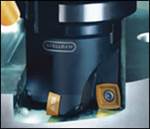
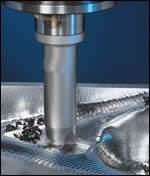
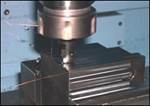
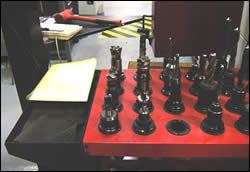
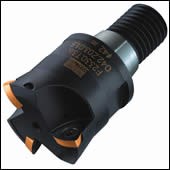








.png;maxWidth=300;quality=90)


.jpg;maxWidth=300;quality=90)







